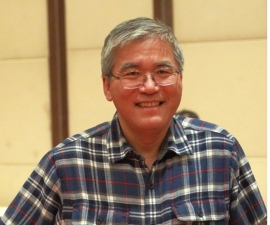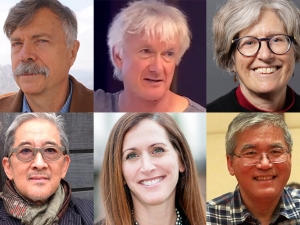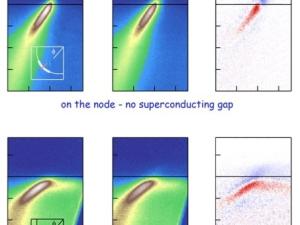

Research Bio
Professor Lee is a theoretical condensed matter physicist. The principal goal of his research is to develop the theory for topological phase transitions and to understand the mechanism of high-temperature superconductivity. More generally he is interested in new organization principles enabling microscopic degrees of freedom to behave cooperatively in a fundamentally new manner. His research is in the arena of strong-correlated many-body physics.
The following are some specific examples of Professor Lee’s research.
Topological phase transitions. Traditionally physicists classify states matter according to their symmetries. In the last millennium, the study of phase transitions between states with different symmetries has revolutionized physics. The new concepts emerged from such study include the idea of universality, scaling, the renormalization group, etc. These concepts have impacted almost every branch of modern physics. In the last ten years, a new type of quantum state has been discovered. These states are called "symmetry-protected topological states". These states form different equivalent classes. States in different class are not differentiated by their symmetry, rather, they are differentiated by the gapless excitations localized on their boundary. The phase transition between this new type of states is what Professor Lee's research group is studying. The principal question they set out to understand is what is the fundamental difference between this type of topological phase transitions and the traditional symmetry-breaking phase transitions. In the last few years, they developed a "holographic" theory for this type of phase transitions. In this theory, the critical state between two inequivalent topological phases is viewed as the boundary state of a different topological state living in one space dimension higher.
High-temperature superconductivity. Elevating the transition temperature of superconductors to near room temperature so that applications are practical is one of the most important challenges in science. In the last thirty years, two families of superconductors which superconduct at relatively high temperature under ambient pressure have been discovered. These are the copper-oxide and iron-based superconductors. Professor Lee's primary interest is to understand the mechanism by which strong Cooper pairing occurs in these materials. For example, in the arena of iron-based superconductivity, the highest critical temperature is realized at the interface between a single atomic layer of FeSe and bulk SrTiO3. Professor Lee's research group discovered that the reason for high Tc is a cooperative pairing mechanism caused by the electron-electron interaction in FeSe and the across-interface electron-phonon interaction.
Strongly interacting Fermi gas in two dimensions. A new state of matter forms when two-dimensional electron gas is submitted to strong magnetic fields. This new state, the quantum Hall liquid, is an incompressible quantum fluid. It has soliton-like excitations that carry fractional electron charge, and obey quantum statistics between that of fermions and bosons. In the absence of magnetic field, weakly interacting Fermi gas always insulates. Due to recent experimental discovery, it is possible that strongly interacting electron gas has a non-Fermi liquid metallic state. Whether such a state exists is the question this research intends to answer.
In general Professor Lee is interested in new organization principles which explain the novel and unexpected collective behaviors of microscopic degrees of freedom. The exotic quantum states that fit this description include spin liquid and other "intrinsically" topological ordered states. Strange metal and other topological ordered gapless state. Topological insulator and superconductors, etc.
Research Expertise and Interest
physics, theoretical condensed matter, topological phase transitions, high-temperature superconductivity, organization principles enabling microscopic degrees of freedom to behave cooperatively, matter and their formation mechanisms, low dimensional quantum magnets, strongly correlated Fermi and Bose fluids
In the News
Six New Fellows of American Academy of Arts & Sciences
A new tool to attack the mysteries of high-temperature superconductivity
Using ultrafast lasers, Berkeley Lab scientists have tackled the long-standing mystery of how Cooper pairs form in high-temperature superconductors. With pump and probe pulses spaced just trillionths of a second apart, the researchers used photoemission spectroscopy to map rapid changes in electronic states across the superconducting transition.


